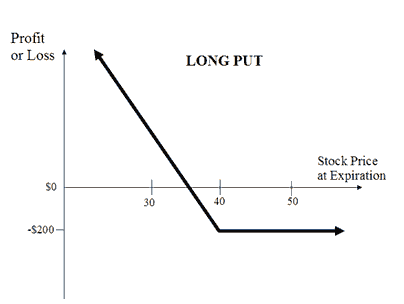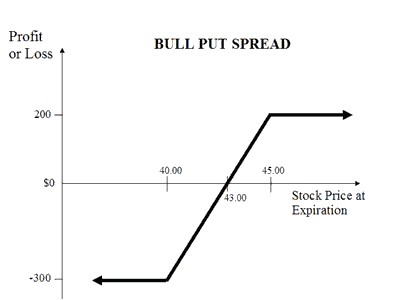 Zerodha (Trading Account)
Zerodha (Trading Account)
FREE Equity Delivery and MF
Flat ₹20/trade Intra-day/F&O
 Zerodha (Trading Account)
Zerodha (Trading Account)
FREE Equity Delivery and MF
Flat ₹20/trade Intra-day/F&O

|
|
Compare Long Put and Bull Put Spread options trading strategies. Find similarities and differences between Long Put and Bull Put Spread strategies. Find the best options trading strategy for your trading needs.
| Long Put | Bull Put Spread | |
|---|---|---|
 |
 |
|
| About Strategy | A Long Put strategy is a basic strategy with the Bearish market view. Long Put is the opposite of Long Call. Here you are trying to take a position to benefit from the fall in the price of the underlying asset. The risk is limited to premium while rewards are unlimited. Long put strategy is similar to short selling a stock. This strategy has many advantages over short selling. This includes the maximum risk is the premium paid and lower investment. The challenge with this strategy is that options have an expiry, unlike stocks which you can hold as long as you want. Let's assume you are bearish on NIFTY and expects its price to fall. You can deploy a Long Put strategy by buying an ATM PUT Option of NIFTY. If the price of NIFTY share... Read More | A Bull Put Spread (or Bull Put Credit Spread) strategy is a Bullish strategy to be used when you're expecting the price of the underlying instrument to mildly rise or be less volatile. The strategy involves buying a Put Option and selling a Put Option at different strike prices. The risk and reward for this strategy is limited. A Bull Put Strategy involves Buy OTM Put Option and Sell ITM Put Option. For example, If you are of the view that the price of Reliance Shares will moderately gain or drop its volatility in near future. If Reliance is currently trading at Rs 600 then you will buy an OTM Put Option at Rs 700 and a sell an ITM Put Option at Rs 550. You will make a profit when, at expiry, Reliance closes at Rs 700 level and incur losse... Read More |
| Market View | Bearish | Bullish |
| Strategy Level | Beginners | Advance |
| Options Type | Put | Put |
| Number of Positions | 1 | 2 |
| Risk Profile | Limited | Limited |
| Reward Profile | Unlimited | Limited |
| Breakeven Point | Strike Price of Long Put - Premium Paid | Strike price of short put - net premium paid |
| Long Put | Bull Put Spread | |
|---|---|---|
| When to use? | A long put option strategy works well when you're expecting the underlying asset to sharply decline or be volatile in near future. |
This strategy works well when you're of the view that the price of a particular underlying will rise, move sideways, or marginally fall. |
| Market View | Bearish When you are expecting a drop in the price of the underlying and rise in the volatility. |
Bullish When you are expecting a moderate rise in the price of the underlying or less volatility. |
| Action |
Let's assume you're Bearish on Nifty currently trading at 10,400. You expect it to fall to 10,000 level. You buy a Put option with a strike price 10,000. If the Nifty goes below 10,000, you will make a profit on exercising the option. In case the Nifty rises contrary to expectation, you will incur a maximum loss of the premium. |
A Bull Put Strategy involves Buy OTM Put Option + Sell ITM Put Option. For example, If you are of the view that the price of Reliance Shares will moderately gain or drop its volatility in near future. If Reliance is currently trading at 600 then you will buy a OTM PUT OPTION at 700 and a sell a ITM PUT OPTION at 550. You will make a profit when at expiry Reliance closes at 700 level and incur losses if the prices fall down below the current price. |
| Breakeven Point | Strike Price of Long Put - Premium Paid The breakeven is achieved when the strike price of the Put Option is equal to the premium paid. |
Strike price of short put - net premium paid |
| Long Put | Bull Put Spread | |
|---|---|---|
| Risks | Limited The risk for this strategy is limited to the premium paid for the Put Option. Maximum loss will happen when price of underlying is greater than strike price of the Put option. |
Limited Maximum loss occurs when the stock price moves below the lower strike price on expiration date. Max Loss = (Strike Price Put 1 - Strike Price of Put 2) - Net Premium Received Max Loss Occurs When Price of Underlying <= Strike Price of Long Put |
| Rewards | Unlimited This strategy has the potential to earn unlimited profit. The profit will depend on how low the price of the underlying drops. |
Limited Maximum profit happens when the price of the underlying moves above the strike price of Short Put on expiration date. Max Profit = Net Premium Received |
| Maximum Profit Scenario | Underlying goes down and Option exercised
|
Both options unexercised |
| Maximum Loss Scenario | Underlying goes up and Option not exercised
|
Both options exercised |
| Long Put | Bull Put Spread | |
|---|---|---|
| Advantages | Unlimited profit potential with risk only limited to loss of premium. |
Allows you to benefit from time decay in profit situations. Helps you profit from 3 scenarios: rise, sideway movements and marginal fall of the underlying. |
| Disadvantage | You may incur 100% loss in premium if the underlying price rises. |
Limited profit. Time decay may go against you in loss situations. |
| Simillar Strategies | Protective Call, Short Put, Long Straddle | Bull Call Spread, Bear Put Spread, Collar |

Add a public comment...

FREE Intraday Trading (Eq, F&O)
Flat ₹20 Per Trade in F&O
|
|